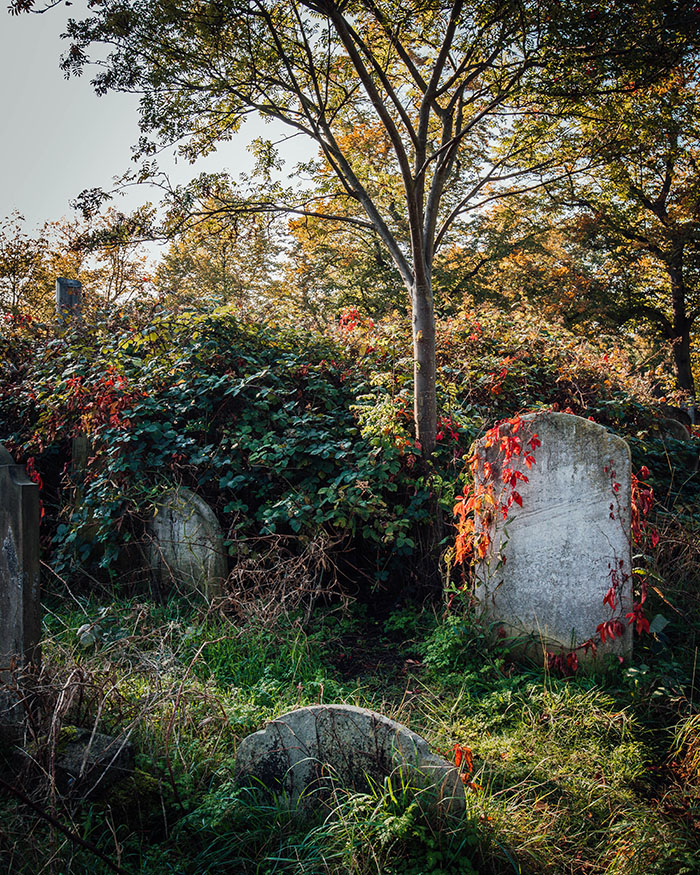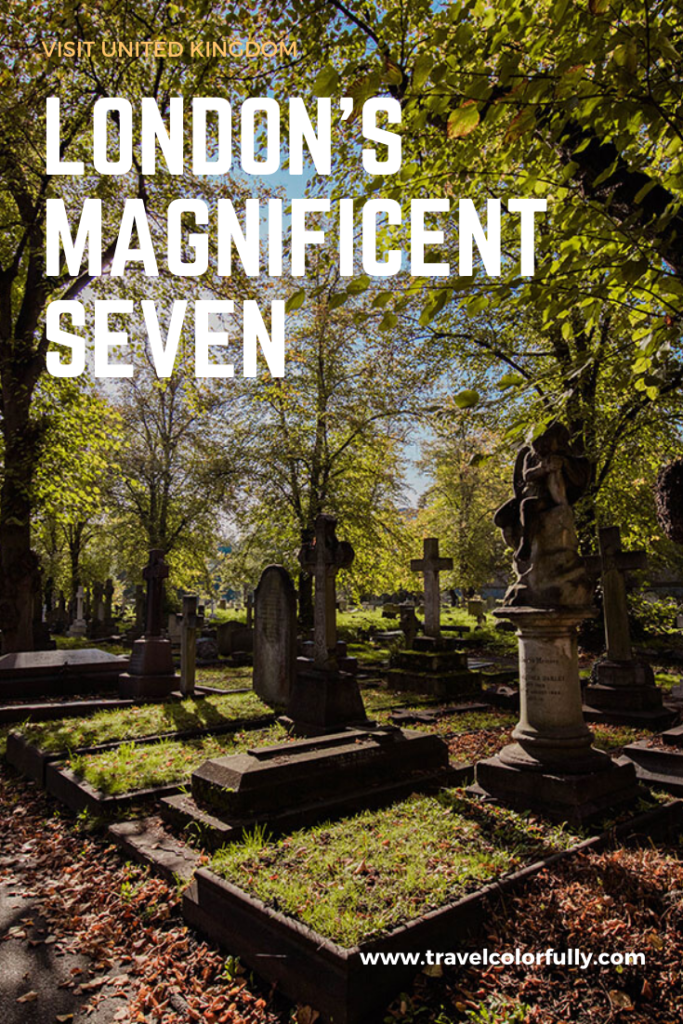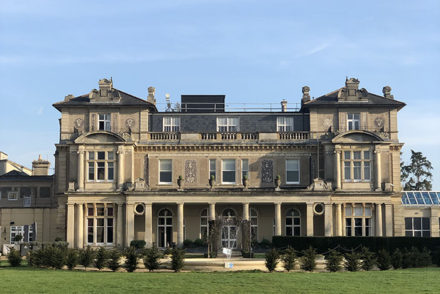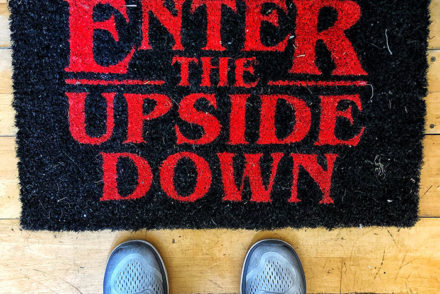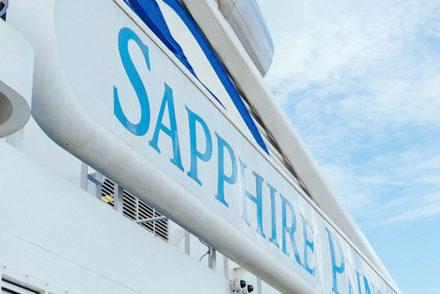When you visit Londonvisit London, you’ll probably make it a point to visit the obvious attractions. You know the ones I’m talking about– the London Eye, Tower Hill, Westminsters. But why not head off the beaten track and visit London’s Magnificent Seven, a collection of Victorian cemeteries you can find scattered around the outskirts of the city? Each one is unique and has quite the history and legends to go with them. Wander through the ghost towns of London and find out for yourself that the city is more than its touristy bits.
London’s Magnificent Seven
1. Kensal Green Cemetery
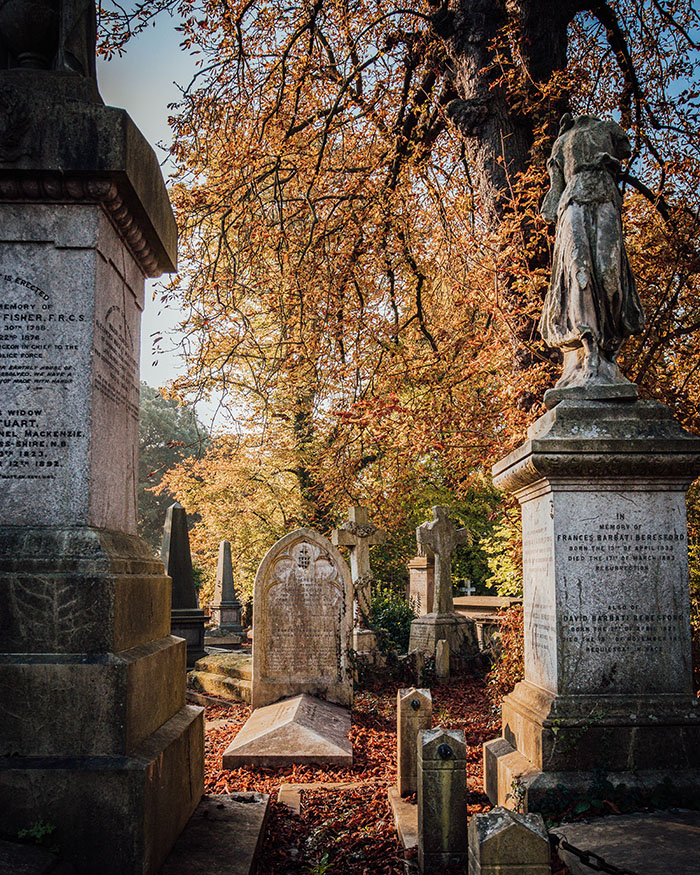
Magnificent Seven – Kensal Green Cemetery
Kensal Green Cemetery is the oldest of the magnificent seven burial grounds. It opened in 1833 and the construction of the cemetery was based off of Pere la Chaise in Paris. Kensal Green Cemetery is a conservation area and also the final resting place of many famous Brits. Among them are Charles Blondin, the tight rope walker who walked across Niagara Falls on a tight rope several times during his life. And James Malcolm Rymer, the co-creator of Sweeney Todd is buried here.
But, one of the most popular monuments there is a sarcophagus tomb which was dedicated to Princess Sophia. She spent her life isolated from the royal family. She was buried in a public cemetery when she died.
The cemetery is open daily. Check their website for times as they vary throughout the year.
2. Brompton Cemetery
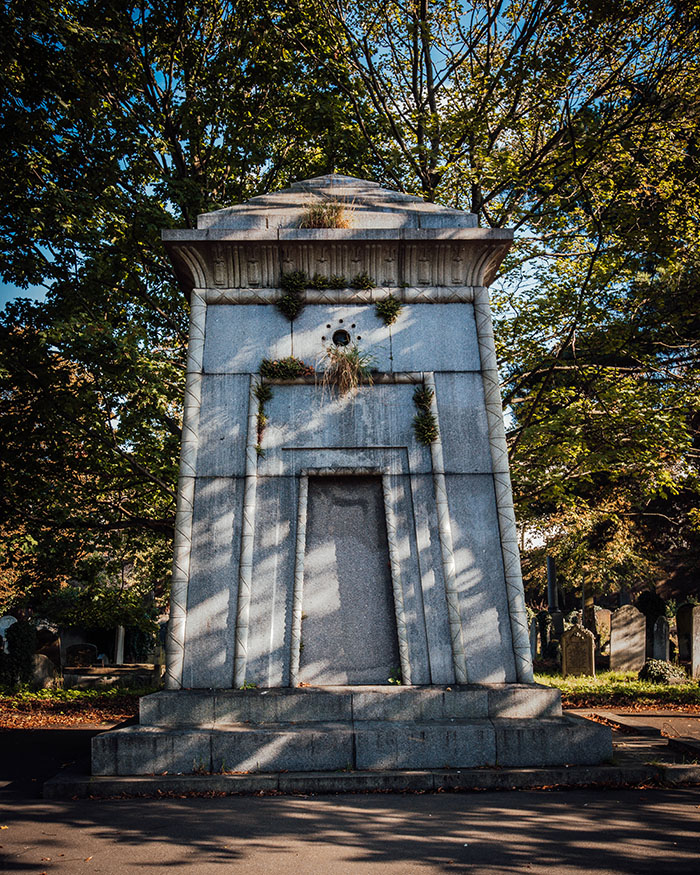
Brompton Cemetery
Located in West London, Brompton Cmetery is one of the most affluent of the Magnificent Seven.
However, there are also some pretty weird and wonderful things going on here despite its affluence. For instance, there is a tomb, which is said to be a time machine. Hannah Courtoy, a wealthy socialite, is buried inside it. Joseph Bonomi, a well known sculptor and Egyptologist in the 1800s, designed her tomb. The tomb is completely sealed and features hieroglyphic detailing on the outside. It was said to connect Brompton Cemetery to the rest of London’s Magnificent Seven.
Another interesting thing about Brompton Cemetery is that it has its own bee apiary. You can even purchase honey at the cemetery when it’s open to visitors. And after you’ve grabbed some honey, you can wander the cemetery visiting the graves of the inventor of sunglasses, Sir William Crookes and the inventor of the traffic light, John Peake knight.
Brompton Cemetery is open from 7 am to 5 pm. You can often see locals cycling and running through the park.
3. Nunhead Cemetery
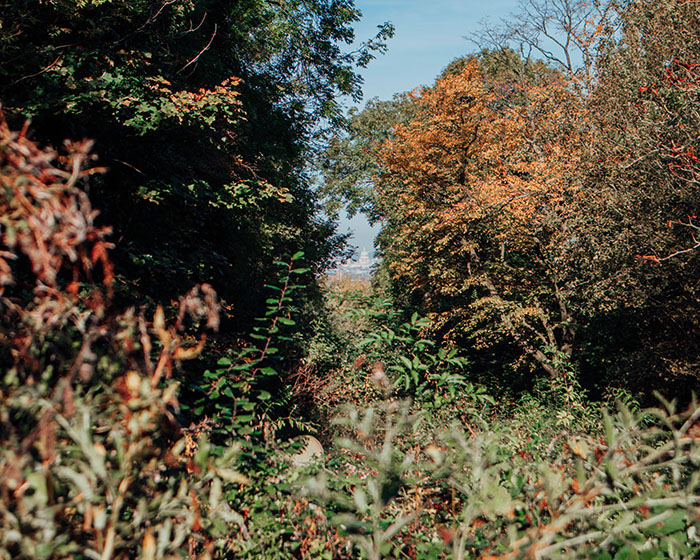
Nunhead Cemetery
Now it’s time to head to Southeast London to visit the Nunhead Cemetery, which is the second largest of the Magnificent Seven. There are about 270,000 people buried here dating back to the mid 1800s.
When you visit Nunhead, you want to visit the Western side of the cemetery to find the famous St. Paul’s viewpoint. The viewpoint is beautiful and you can see St. Paul’s in the distance, perfectly framed by the trees surrounding it. However, if you do want to snap a photo, you’ll need a camera with a good telephoto lens.
After you enjoy the view, take a stroll through the cemetery that cost just one pound. Yes you read that correctly. In 1975 the Southwark Council purchased the cemetery from the United Cemetery Company for just one pound. And it wasn’t until 1990 that restoration even began.
Nunhead Cemetery is open daily from 8:30-4 pm.
4. West Norwood Cemetery
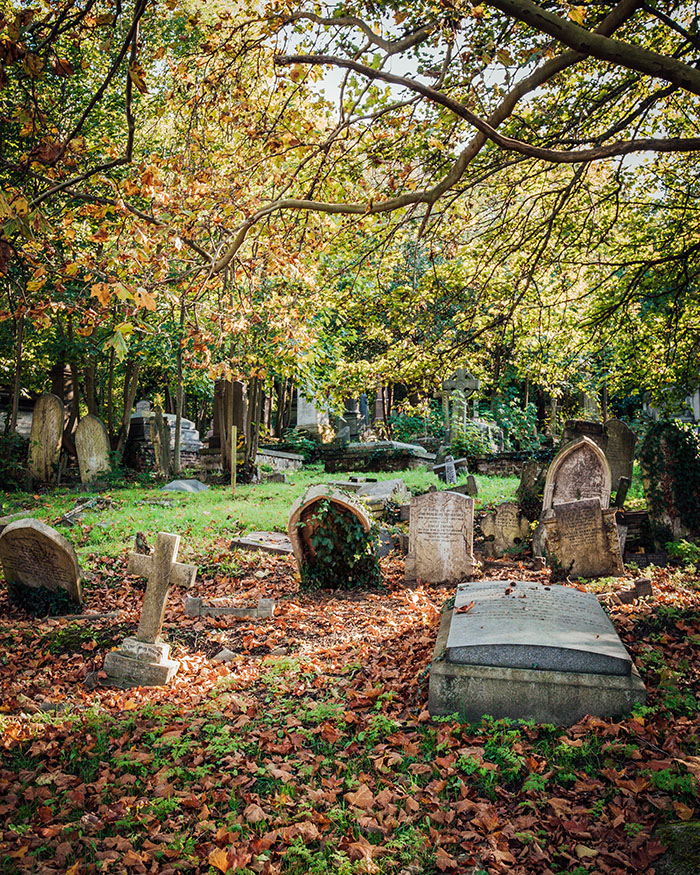
West Norwood Cemetery
Continue to explore South of the river and head to West Norwood Cemetery. It’s located in Southwest London. The cool thing about West Norwood is that it’s the first cemetery of its kind. It’s built in a gothic style on top of a hill. The purpose of building it on a hill was so that the bodies didn’t contaminate the ground around the cemetery in the nearby town.
Out of all of the London’s Magnificent Seven, it was considered quite fashionable to be buried here. Isabella Beeton, is laid to rest here. She was one of the most famous chefs in British history,
West Norwood is open daily. Check their website for hours as they differ year round.
5. Tower Hamlets Cemetery Park
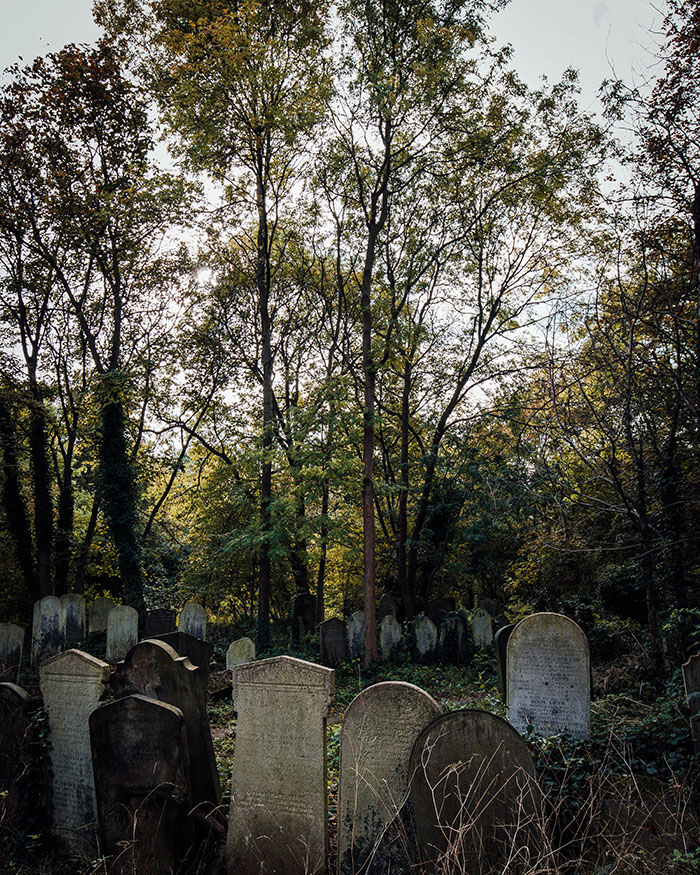
Tower Hamlets Cemetery Park
The first thing you should know about Tower Hamlets Cemetery is that in 1967, the Greater London Council nearly cleared out the entire thing. The clear out stopped due to protesting. Still, much of the cemetery is empty today.
Once used as a resting place for London’s working class, Tower Hamlets doesn’t have as many notable names buried there. However, there are many stories surrounding the cemetery. For example, three police officers who died at different times and in different situations are buried in one grave. No one knows why this is.
Another thing to note about this member of the Magnificent Seven is that it was heavily damaged during the war.
Tower Hamlets Cemetery Park is open 24 hours a day.
6. Abney Park Cemetery
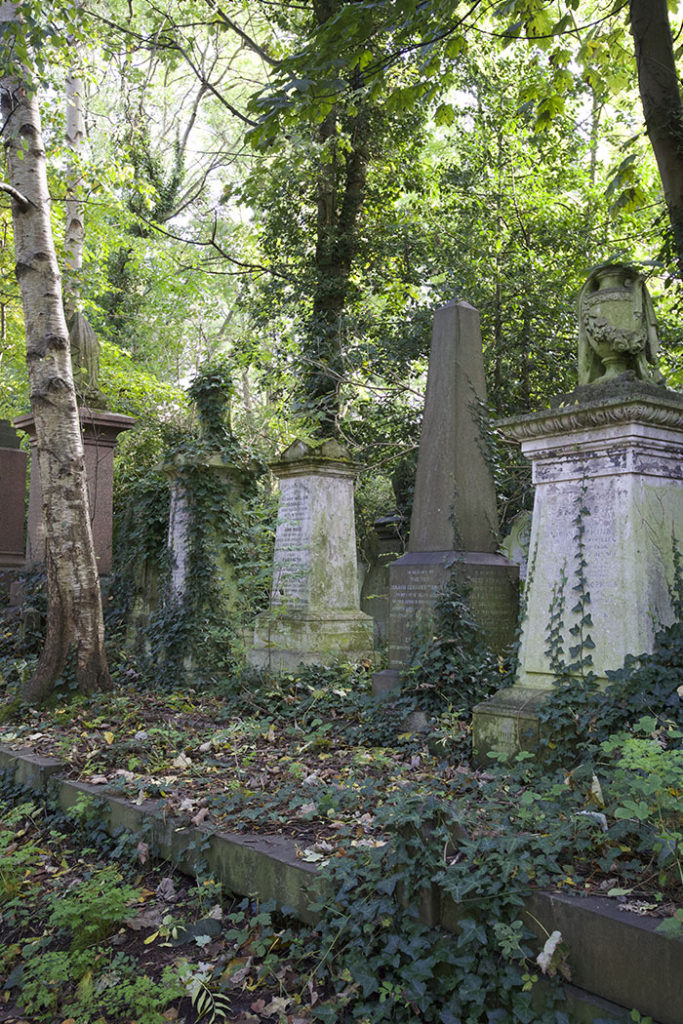
Abney Park Cemetery
Venture to North London to visit the next of the Magnificent Seven. Originally opened in 1840, Abney Park Cemetery is the final resting place for many interesting people. Among them are a lion tamer, Victorian comedians, and 19th century nonconformists.
In addition, Abney Park Cemetery is also the location for Amy Winehouse’s music video, Back to Black.
The cemetery is open from Wednesday through Saturday. Please check the website for hours.
7. Highgate Cemetery
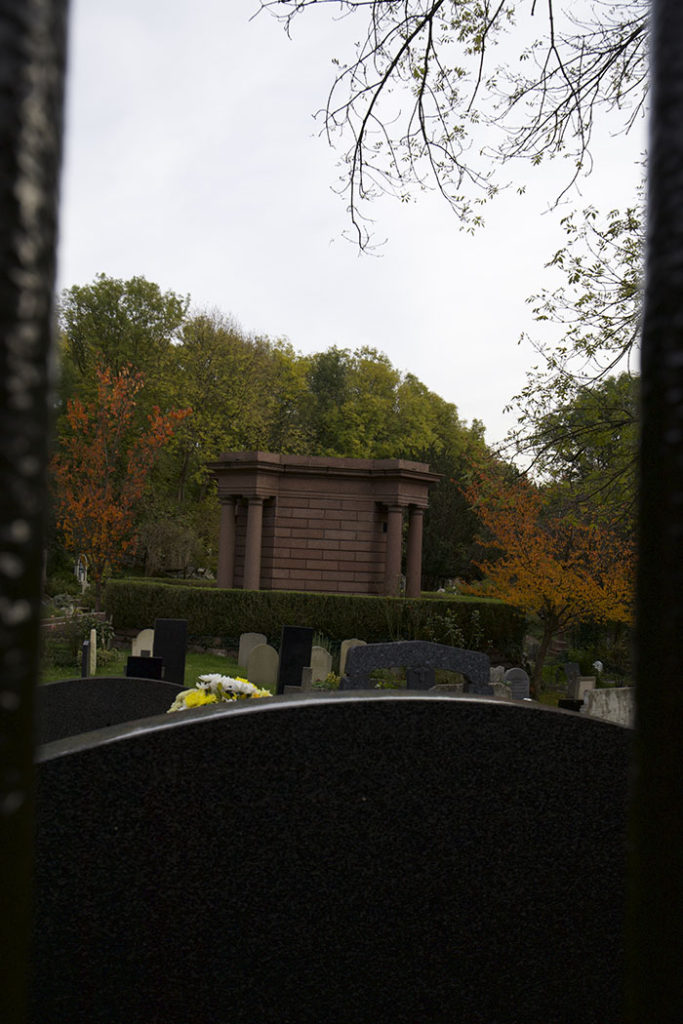
Highgate Cemetery
And last but not least is the most famous of the Magnificent Seven, Highgate Cemetery. You can find Karl Marx, George Eliot, and many more famous people buried here.
There are two sections in the cemetery. East and West. You can visit the East section on your own for four pounds but you’ll have to book into a walking tour to visit the West. Find more information on their website!
The West side is where you’ll find the chapel, colonnade, Egyptian Avenue, and more. Fantastic Beasts the Crimes of Grindelwald’s famous cemetery scene was filmed here, making it easily recognizable. In short, Highgate Cemetery is one of the more visited cemeteries of London’s Magnificent Seven because of who is buried there and the architecture inside of it.
Pin It For Later:

